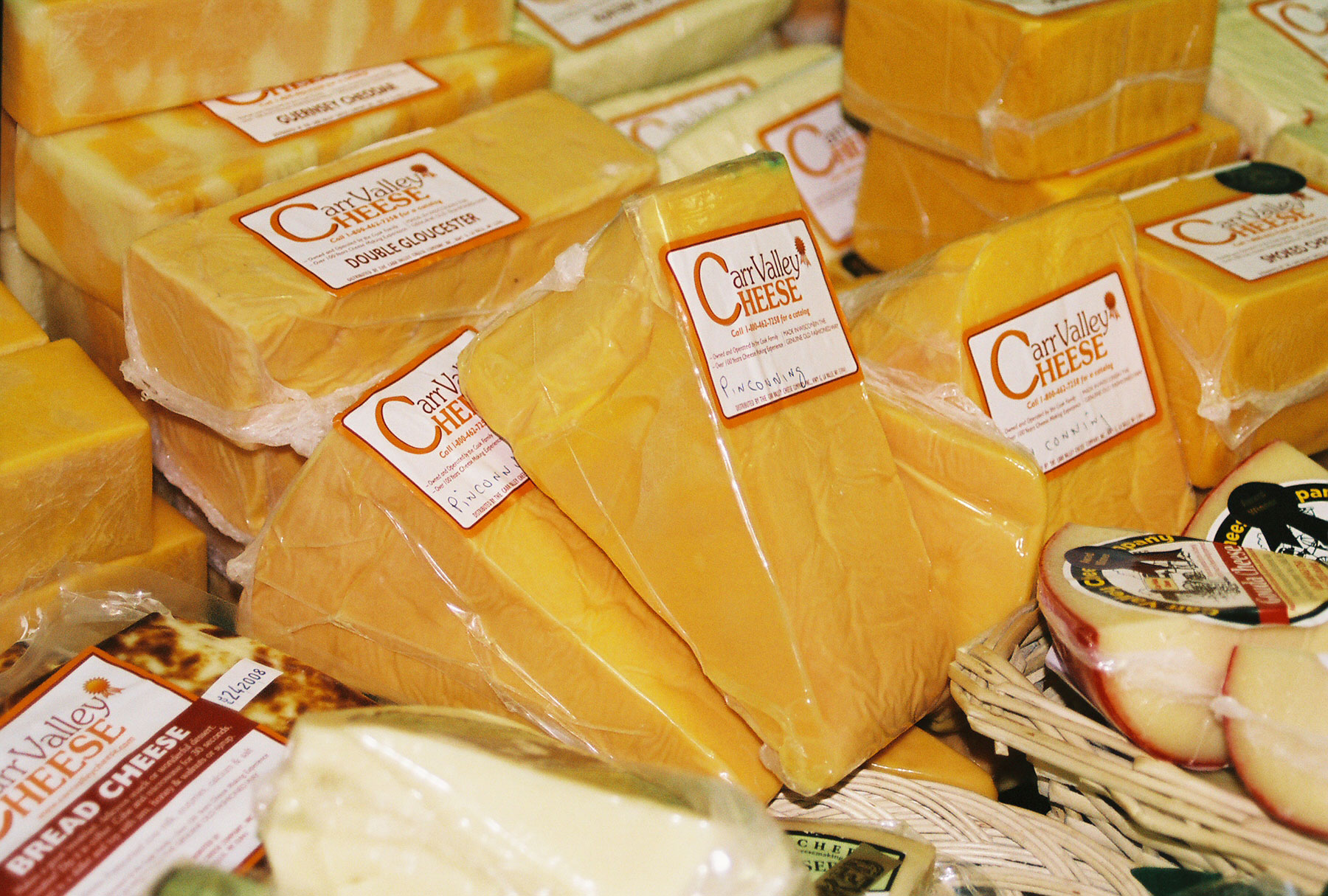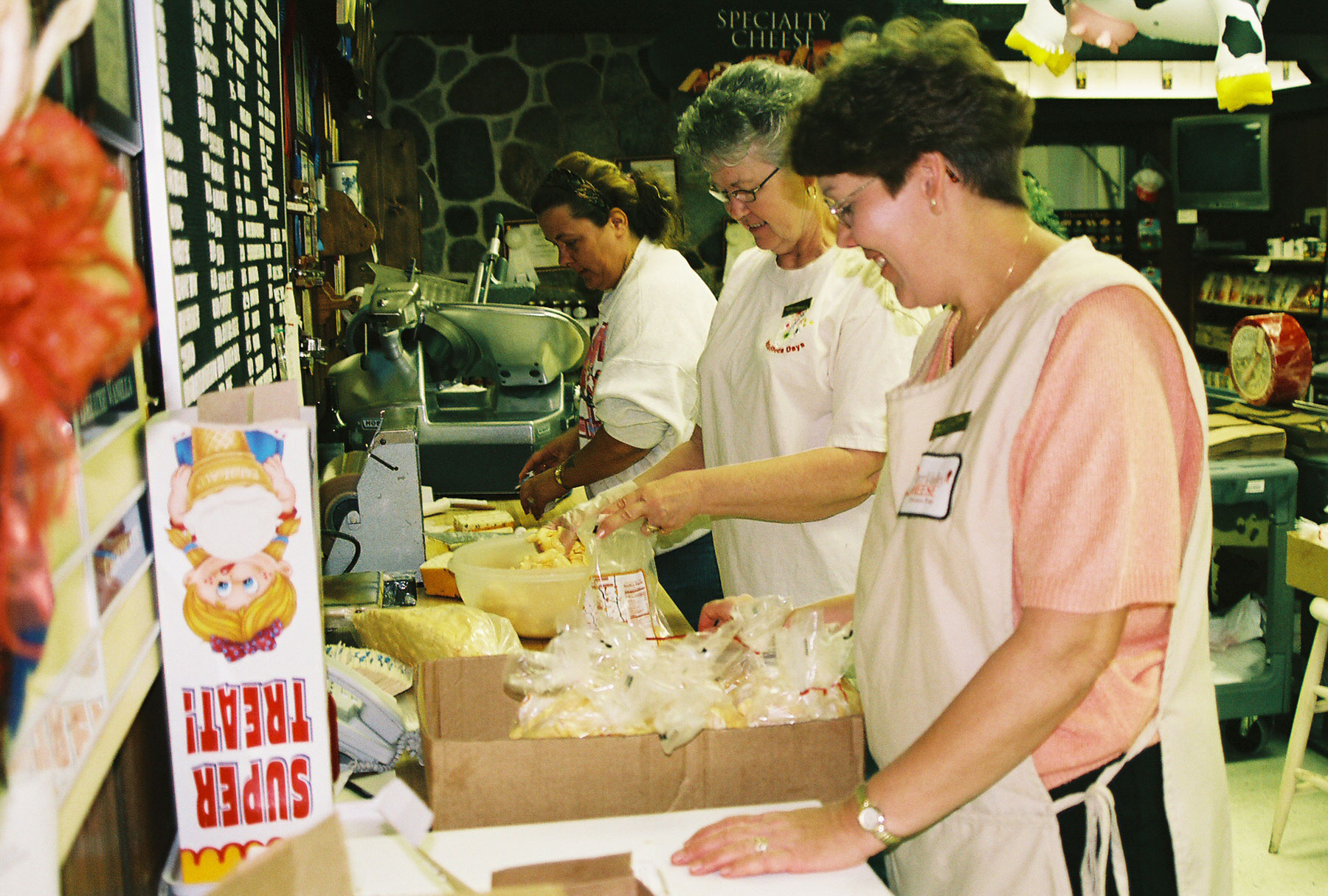 |
|
 |
| Aged to Perfection |
| Pop Art |
| Bottling Up Success |
| Edible Art |
| Aged to Perfection: Four Generations of Cheesemaking | ||||||||||||||||
| Jill Klosterman | ||||||||||||||||
Sid Cook is not a cheesehead. Sid Cook is a cheese master—the reigning king of dairyland, and the fourth of his bloodline to ascend to professional cheesemaker status. But Cook did not achieve his Wisconsin Master Cheesemaker crown via nepotism. Rather, Cook blended pure heartland ingredients with the built knowledge of heritage, science and art to create a cheese experience. “There are a lot of people who make cheese, but not a lot of cheesemakers,” Cook said, adding emphatically, “I am a cheesemaker.” In the cheese industry, the distinction between makers of cheese and cheesemakers is critical. Those who make the product do so via a completely computerized process, interacting with machines rather than dairy products. Think Kraft, and you’ve got people who make cheese, according to Cook.
“Most of the cheeses that are in the grocery store are made in commodity plants where the cheese goes through a rubber hose into a tank and you don’t see it until it comes out in a cardboard box,” he said. “It’s done very efficiently, by time, it’s all computerized and cheeses, and they produce in three or four days what we produce in a year.” Cheesemakers, on the other hand, are proficient in both artistry and grading. True masters regularly evaluate cheese quality, defects and maturity through a sensual process no computer can match: Grading starts with a visual inspection and continues with an assessment of smell, taste and texture. At Cook’s Carr Valley Cheese, a group of 12 licensed cheesemakers—whose collective experience in the industry spans nearly two centuries—oversee the production and grading of each cheese specimen. “We have a tremendous amount of depth and breadth,” Cook said. “We have two Masters who have completed a 15-year program and have been making cheese for 80 years between them. We have two other cheesemakers that have another 85 years of experience. And we have the other eight that have been licensed for an average of six years between them.” All three Masters at Carr Valley Cheese completed the Wisconsin Master Cheesemaker Program, billed by the Wisconsin Milk Marketing Board as “the most ambitious and rigorous advanced training program in the country and the only Master program outside of Europe.” All said and done, the program requires 15 years of advanced training and education. “There’s very few who enter it and even fewer who become Wisconsin Master Cheesemakers,” said Cathy Hart, director of cheese company communications for the WMMB. Compared to his fellow masters, Hart said Cook, who has mastered Cheddar and Fontina, stands out as an innovator. “He’s developed so many artisanal cheese varieties—that’s really his niche, to continue looking to refine and innovate with different types of cheese,” she said. To Cook, history and heritage constitute key ingredients in any artisan cheese, as the ability to predict cheese maturity requires an immense flavor memory. That’s why , Cook said, Carr Valley Cheese develops new varieties by blending family tradition, Wisconsin heritage and European influence in each of more than 60 varieties of cheese, 20 being Cook's own American originals. “True cheesemakers work by learning what the cheese is doing, not by the clock that’s ticking,” Cook said. “For example, a grocery store cheese labeled ‘sharp’ or ‘aged’ is usually only aged six, nine months. But ours is totally different. We age it from four years, six years, eight years, 10 years. You’re going to get a lot more flavor and a lot more taste.”
Moreover, he said, Cook's family recipes have incubated well beyond four generations. “Many of the recipes we use are those that I learned from my dad and he learned from my mother's dad and are generational,” he said. “Those are very traditional, but we also do some things that are very innovative and unusual.” Among his proudest innovations, Cook mentioned a natural-rind sheep-milk cheese whose "mellow, complex and sweet" qualities reflect his daughter Marisa, after whom he named the cheese. But Sid’s father Sam raved about the Baby Swiss.“I like the Baby Swiss—I do like them all but the favorite is used on eggs and it's very, very good,” Sam Cook said. “We used to just have one cheese place and a few cheeses, and he's carried it to new places—he's carried it on to a different height.” |
||||||||||||||||
1 | 2 | 3 print this article |
||||||||||||||||
About Us | Contact Us | Business Partners | Archives | Sitemap
Copyright 2007 Curb Magazine

